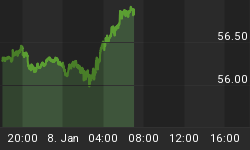Despite the increased vaccine rollout, global deaths from the virus have now surpassed 4 million as the more virulent Delta variant targets more than 100 countries, including those with high vaccination rates.
According to data from Johns Hopkins University, India accounted for 26% of the increase in the last 1 million deaths, and Brazil about 18%. The U.S. accounts for about 4% of the rise.
While vaccination access and rates are increasing in higher-income countries, the same cannot be said for many lower-income countries that lack the necessary resources to pull this off en masse.
The World Health Organization (WHO) recently described “a shocking imbalance in the global distribution of vaccines”.
“Most countries do not have anywhere near enough vaccines to cover all health workers or all at-risk groups, never mind the rest of their populations,” WHO Director General Tedros Adhanom Ghebreyesus, PhD, MSc, said in a press release.
As of July 7th, more than 3.3 billion doses of COVID-19 vaccine had been administered globally, according to Our World in Data, a research group affiliated with the University of Oxford.
The United States has succeeded in fully vaccinating nearly half of its population, while some African and Asian countries have seen vaccination rates as low as 1%.
In India, less than 5% of the population is fully vaccinated.
India’s Covid death toll crossed 400,000 last week, with the majority happening during a surge over the past two months. Earlier this week, the country’s Prime Minister sacked dozens of government officials, health minister included, due to mishandling of the pandemic.
The rise of new cases and hospitalizations in some countries, including India, could have wider implications for the global economic recovery.
India is the leading supplier in several critical industries, including information technology support and generic drug manufacturing. In the U.S., nearly 90% of total prescriptions are filled by generic drugs, approximately one-third of which comes from India.
The health crisis in India alone could lead to additional supply chain shortages, including in clothing, health and financial services, among others.
Last month, the Biden administration announced that it would donate 80 million vaccine doses to countries in need, with most earmarked for India and Brazil, another nation that has seen an increase in hospitalizations and deaths in the last couple of months.
Earlier this month, the Organization for Economic Co-operation and Development (OECD) warned that new outbreaks of Covid-19 remain one of the top threats to a global economic recovery.
The OECD estimates that the U.S., South Korea, Japan and Germany are on track to recover to pre-pandemic levels of GDP per capita by the end of 2021. On the other hand, some countries- nearly all of those still fighting outbreaks--will have to wait for 2025 to recover.
However, experts still warn that even the U.S. is not free from risk given vaccine disparity. According to the Centers for Disease Control and Prevention (CDC), vaccination coverage was lower in rural counties (38.9%) than in urban counties (45.7%). Vaccination rates among Black and Hispanic people have lagged behind those of White people.
Among those who had received at least one dose of the vaccine, nearly two thirds were White (60%), 9% were Black, 15% were Hispanic, 6% were Asian, 1% were American Indian or Alaska Native.

















